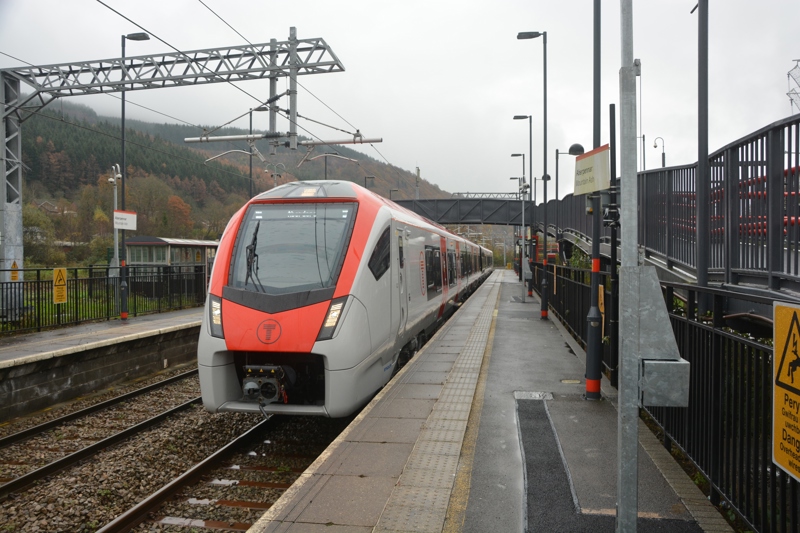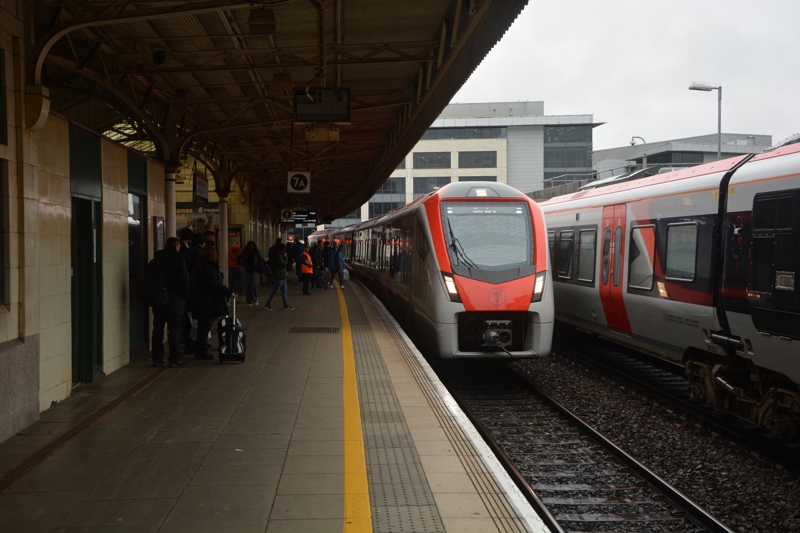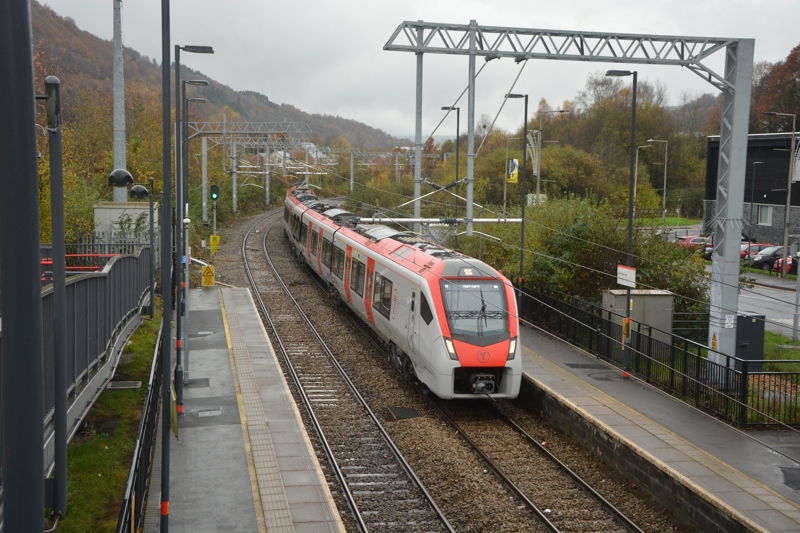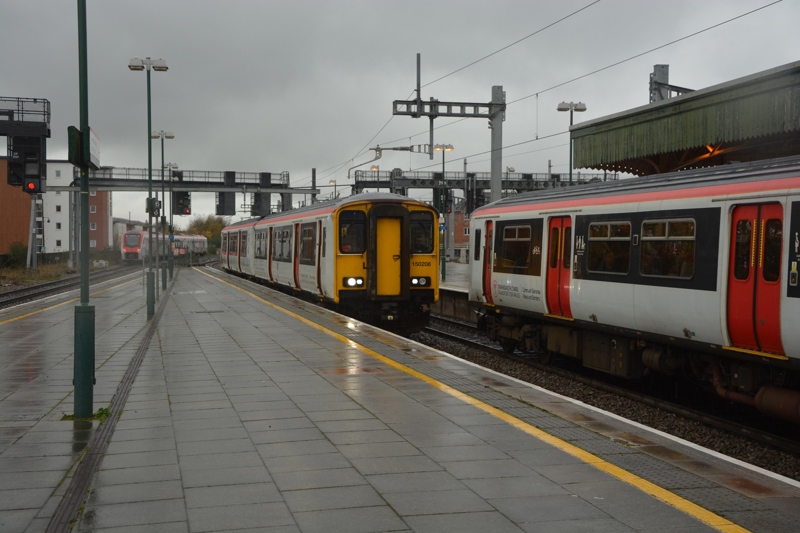
The UK’s first ‘tri-mode’ trains made their passenger debut in mid-November, when Transport for Wales’ first Class 756s entered service.

The UK’s first ‘tri-mode’ trains made their passenger debut in mid-November, when Transport for Wales’ first Class 756s entered service.
The two four-car units (756116 and 756117) operated on the Aberdare and Merthyr Tydfil lines on November 15.
Between now and spring 2025, 14 of the 24 Stadler FLIRT units are set to enter traffic. Around two-thirds of those are four-car ‘756/1s’, with the remainder three-car ‘756/0s’.
Powered by 25kV, 50Hz batteries or a diesel-electric engine, and reaching a top speed of 75mph, the units will initially run to Merthyr Tydfil and Aberdare, before being introduced onto the Treherbert route next year.
They will operate along those lines alongside a dwindling number of Class 150 diesel multiple units (DMUs) until late 2025, when the first of 36 new Class 398 ‘tram-trains’ enter service.
After that, they are due to appear on the Rhymney and Vale of Glamorgan lines, before then starting to travel from Coryton and Caerphilly-Penarth, and from Rhymney-Barry Island and Bridgend from 2026, as work to electrify the rest of the South Wales Metro is completed.
So far, the Merthyr Tydfil, Aberdare and Treherbert lines have been electrified. On stretches of line that aren’t under the wires, batteries will be the next power option.

Stadler Commercial Project Manager Emil Hansen said the distance that ‘756s’ can travel on diesel or battery power depends on operational parameters such as route, load and acceleration profiles, but that testing for battery-only operation suggested 40km (25 miles) would be “a conservative estimate”.
As well as being charged from overhead wires, regenerative braking also recharges the batteries.
“The units are designed to regenerate the electric braking energy for both on-board systems and at the same time recharge the batteries. Once the batteries are fully charged from the overhead line, the braking energy is regenerated back into the electric grid,” he explained.
Next year, overhead wires will be installed and energised along Coryton-Cardiff Queen Street, Caerphilly-Cardiff Queen Street (both February), Queen Street- Cardiff Bay (the spring) and Rhymney-Caerphilly (late 2025).

Class 231 DMUs, which are currently operating alongside ‘150s’ and ‘153s’, will then move onto Maesteg-Cardiff–Ebbw Vale and Cardiff-Cheltenham services. Transport for Wales CEO James Price said the ‘756s’ will allow for improved timetables on the South Wales Metro.
“We will be bringing them in as quickly as we can,” he said. “It will be down to how they perform in traffic and how fast we can do driver training.”
As well as quicker acceleration and better braking, Price explained that with wider doors, level boarding and more space, dwell times can be reduced.
Four-car units have 158 regular seats, 32-tip-ups, and room for 204 standing passengers, while the three-car variants have 118 standard seats, 24 tip-ups and space for 148 people standing.

From 2026, Pontypridd-Cardiff trains are set to increase from eight to 12 per hour, and Valley lines from two to four services per hour.
Price said the arrival of the ‘756s’ means “the beginning of allowing ‘150s’ to go off lease”, but admitted: “They will be with us into 2025 filling in gaps.”
Login to continue reading
Or register with RAIL to keep up-to-date with the latest news, insight and opinion.

















Login to comment
Comments
No comments have been made yet.